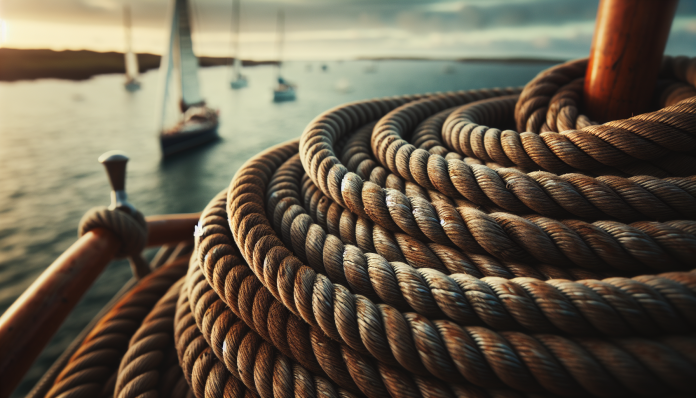Embarking on the open waters with a sailboat can be an exhilarating adventure, igniting a sense of freedom and exploration like no other. However, for those who are new to the world of sailing, it can also be quite daunting. From mastering the art of navigation to understanding the wind’s whims, there are numerous elements to consider before setting sail for your first voyage. Fear not, fellow adventurers, as we have compiled a collection of insightful tips to help beginner sailors navigate the sea with confidence and embark on a thrilling journey that will have you hooked on the joy of sailing.
Choosing the Right Sailboat
Choosing the right sailboat is essential for a fulfilling sailing experience. Consider your sailing goals when selecting a boat. Are you interested in leisurely day trips, coastal cruising, or even offshore passages? Different types of boats excel in different conditions, so research thoroughly to find the one that suits your needs. Additionally, consider your budget and the boat’s condition. Buying a brand new boat may not be necessary, as there are many reliable used boats available. To ensure you make an informed decision, it is recommended to get a survey done by a professional to assess the boat’s condition.
Learning the Basics of Sailing
Before embarking on your sailing adventure, it is crucial to learn the basics of sailing. Familiarize yourself with the language of sailing to effectively communicate with fellow sailors. Terms like port, starboard, bow, and stern would become second nature as you navigate the waters. Understanding wind direction and sailing angles is also essential. Learning how to harness the power of the wind and sail efficiently will greatly enhance your sailing experience. Recognizing different signs and markers while navigating is crucial to ensure a safe and successful voyage. Practice rigging and de-rigging your boat to become familiar with the equipment, and master the art of hoisting and lowering sails smoothly.
Safety Essentials
In any water-based activity, safety should never be compromised. As sailors, wearing a life jacket at all times is imperative to ensure personal safety. Additionally, learning to swim is highly recommended to handle unexpected situations in the water effectively. Always check the weather forecast before setting sail to avoid any potential dangers. Having a float plan is important, especially for longer journeys. Make sure someone knows your intended route and estimated time of arrival. Lastly, acquire essential knowledge on handling emergencies and equip yourself with the necessary tools and equipment.
Essential Sailing Gear
Investing in the right sailing gear can greatly enhance your comfort and performance on the water. A good pair of sailing gloves will protect your hands from rope burn and improve your grip. Proper footwear that provides traction and protects your feet from slipping is crucial. A reliable compass is essential for navigation, ensuring you stay on course. Having a VHF radio on board enables communication with other sailors and emergency services if needed. Lastly, having a properly stocked first aid kit is crucial for any unforeseen medical emergencies.
Understanding Navigation
Navigating the open waters requires a solid understanding of navigation principles. Learn to read nautical charts, which provide essential information about depths, hazards, and reference points. Understanding buoyage and navigational aids is important to navigate safely, as they indicate the direction of the channel or mark hazards. Master the use of a GPS device, which provides accurate positioning and valuable information on speed and distance traveled. Additionally, learning about dead reckoning and plotting will enhance your ability to estimate your position based on known information. Practice using a compass and taking bearings to determine heading and locations.
Maneuvering Techniques
To become a skilled sailor, mastering maneuvering techniques is essential. Tacking and jibing are maneuvers used to change the direction of your boat while sailing upwind and downwind, respectively. Learning about heaving to, a technique used to stop the boat’s forward progress, is helpful in unfavorable conditions. Practice docking and mooring to ensure precise control of your boat during maneuvers in and around marinas. Understanding right-of-way rules is crucial to avoid collisions with other boats. Lastly, learning to handle different wind conditions, such as light winds and strong gusts, will make you a confident and competent sailor.
Maintaining Your Sailboat
Proper maintenance of your sailboat ensures its longevity and performance. Regularly clean and inspect your boat, checking for any signs of wear or damage. Pay special attention to the rigging, as it is under constant strain and must be inspected and maintained regularly. Perform regular checks on your boat’s engine and electrical systems to ensure they are in good working order. Keep the hull clean and free from barnacles, as they can cause drag and reduce your boat’s speed. Finally, store and maintain your sails properly to extend their lifespan and maintain their shape.
Understanding Sailing Signals
Sailing signals and flags are a crucial means of communication among sailors. Learning the common sailing signals and flags will allow you to understand and respond to instructions and warnings from other vessels. Additionally, understanding the significance of sound signals, such as horns and sirens, will help you communicate in poor visibility conditions. Familiarize yourself with navigation lights and their meanings, as they indicate the type, position, and direction of other vessels at night. Lastly, learn about distress signals and how to use them effectively in emergencies.
Planning a Sailing Trip
When planning a sailing trip, several factors must be considered. Choose a suitable destination based on your preferences and sailing experience level. Research whether any permits or licenses are required for the areas you plan to visit and obtain them accordingly. Plan your route and identify important navigation points, such as landmarks or buoys, to ensure a safe and smooth journey. Consider the duration and timing of your trip, accounting for weather conditions and tidal patterns. Pack essential provisions, including food, water, and spare parts that may be needed during the trip.
Joining Sailing Communities
Joining sailing communities can be highly beneficial for beginners. Find a local sailing club or association to connect with like-minded individuals who share your passion for sailing. Attend sailing events and regattas to witness and learn from experienced sailors in action. Establish connections with experienced sailors and mentors who can provide guidance and support as you embark on your sailing journey. Participate in sailing forums and online communities to gain valuable insights and tips from fellow sailors. Consider taking sailing courses or lessons to further develop your skills and knowledge under the guidance of experienced instructors.
Sailing is a thrilling and rewarding activity that offers a unique way to explore the world’s waters. By following these tips and continuously learning and practicing, you will soon become a competent sailor ready to set sail for new adventures. So grab your sailboat, embrace the wind, and embark on an unforgettable journey on the open seas. Fair winds and following seas!





































